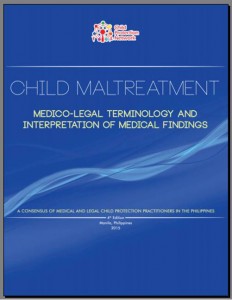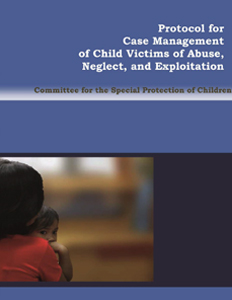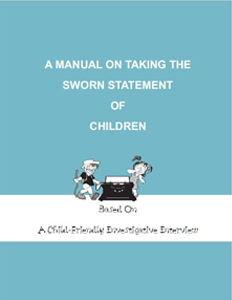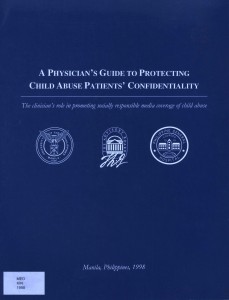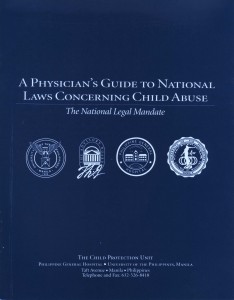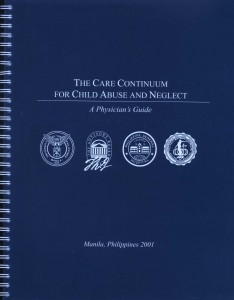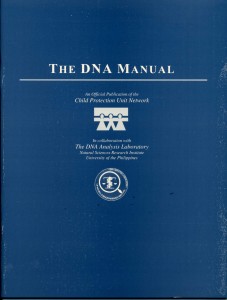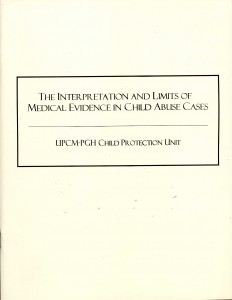Child Maltreatment Medico Legal Terminology and Interpretation of Medical Findings
A Consensus of Medical and Legal Child Protection Practitioners in the Philippines
4th Edition
The 4th Edition of the Consensus is a substantially expanded and updated version of the last edition released almost 10 years ago.
Those familiar with the Consensus will immediately notice a new lay-out. While the 3rd edition focused on how to do a medico-legal certificate, the present edition is designed to guide the physician in filling up the medial modules of the Women and Children Protection Management Information System (WCPMIS).
In this edition, the Consensus has evolved into a comprehensive guide that brings together the collective knowledge and experience of medical and legal child protection practitioners in the Philippines for the past ten years.
Protocol for Case Management of Child Victims of Abuse, Neglect, and Exploitation
Committee for the Special Protection of Children
Introduction
The Committee for the Special Protection of Children (CSPC), pursuant to its mandate under Executive Order 53 dated 11 August 20111 issues these Protocol for Case Management of Child Victims of Abuse, Neglect, and Exploitation for the guidance of all concerned government agencies, non-government organizations, and other stakeholders. A protocol is a set of standards to ensure the protection of the rights of child victims of abuse, neglect, and exploitation.
The Protocol is a product of CSPC’s consultations and workshops with various stakeholders on the implementation of Republic Act 7610: An Act Providing for Stronger Deterrence and Special Protection against Child Abuse, Exploitation and Discrimination, Providing Penalties for its Violation and for Other Purposes and its Implementing Rules and Regulations.
The Protocol highlights the roles and responsibilities of government agencies and their partners, from reporting or referral of a child abuse case until its termination, ensuring that child victims are dealt with in a most child-sensitive and appropriate manner.
A MANUAL ON TAKING THE SWORN STATEMENT OF CHILDREN
Based On A Child-Friendly Investigative Interview
In 2001, a multidisciplinary team composed of physicians, law enforcement officers and social workers were sent to train at the Institute for Crime Science in Zutphen, The Netherlands through the support of The Netherlands government and UNICEF Manila. This resulted in the creation of a core training team and the development of a protocol on the child-friendly investigative interview. In 2003, training on how to nterview children with allegations of sexual abuse was fast tracked by both the Philippine National Police (PNP) and the National Bureau of Investigation in partnership with UNICEF Manila and the Child rotection Unit Network (CPU-Net). It became apparent during the different trainings that the trainees needed a lot of help in formulating questions that young children understood. At the same time it was also noted that even while the trainees were learning the techniques of how to interview children, they had a hard time translating this into the sworn statement. The idea of coming up with a manual that will integrate the Dutch Scenario Model in Interviewing the Child Witness, the investigation of child sexual abuse and the use of developmentally appropriate questions was born.
A technical working group composed of legal advocates, members of the judiciary, Department of Justice (DOJ), PNP, National Bureau of Investigation (NBI) and CPU-Net, was convened. The technical working group ade the first draft of the manual that became the basis of several workshops in Luzon, Visayas, and Mindanao conducted by the Department of Justice with faculty of the CPU-Net. This was further validated by ilot runs in the trainings participated by the PNP and NBI. The final draft was presented to experts and end-users in a final workshop on September 6, 2004.
A Physician’s Guide to Protecting Child Abuse Patients’ Confidentiality
The clinician’s role in promoting socially responsible media coverage of child abuse.
The mass media is a powerful tool for public education concerning child abuse and neglect. To ensure the continuum of care necessary for abused children, however, physicians must protect the privacy, dignity and self-respect of these traumatized patients.
A Physician’s Guide to National Laws Concerning Child Abuse
The National Legal Mandate
Reporting is the Law: Republic Act 7610 (Special Protection of Children Against Child Abuse, Exploitation and
Discrimination Act) and Presidential Decree 603 (Child and Youth Welfare Code) mandate that physicians report suspected cases of child abuse to governmental authorities.
These laws state that the head of any public or private hospital, medical clinic and similar institution, as well as the attending physician and nurse, shall report the examination and/or treatment of any child who appears to have suffered abuse to the appropriate authorities within two days time. Failure to report a possible case of child abuse within 48 hours of the examination is punishable as stated in RA7610 and PD603. RA7610 and PD603 also grant all persons acting in good faith immunity from any liability that may arise as a result of filing a report.
The Care Continuum for Child Abuse and Neglect
A Physician’s Guide
The care continuum for child abuse in the Philippines is an emerging collaborative asset
- standards set forth in this document represent the best learning from Filipino and international specialists in child protection
- the emerging multi-disciplinary partnerships represent the potential to affect broad-scale change
- much remains to be done
The DNA Manual
Forensic DNA evidence is a powerful tool in criminal investigations. A suspect’s DNA may be compared with DNA recovered from the victim or the crime scene; if the samples match, the suspect has been placed at the scene of the crime. Thus, DNA evidence can either link a suspect to a crime or eliminate him from suspicion.
DNA can be especially useful in the investigation of violent crimes, such as child sexual abuse. According to Edmund Locard’s Principle of Exchange, “when any two objects come into contact, there is a transfer of material between them.” Because of the intimate nature of child sexual abuse, assailants are likely to leave traces of biological material, either at the crime scene or on the victim specifically.
The strength of DNA as evidence, however, is based entirely on the reliability of the process used to collect and analyze it. Each step of the process is essential and must be performed accurately; the most technologically advanced laboratory equipment is useless without proper evidence collection and preservation. Mishandling or human error at any point could destroy the evidence or render it inadmissible.
The Interpretation and Limits of Medical Evidence in Child Abuse
Physical Abuse
- Differential diagnosis of abuse
- Head injuries & Shaken Infant Syndrome
- Abusive deaths and the autopsy dilemma
Sexual Abuse
- Interpreting the medical exam
- Limitations of the medical exam
- Forensic evidence in the Philippines
The Forensic Interview
- The single integrated interview protocol
- Evaluating a child’s disclosure/testimony
- Abused children in the courts



